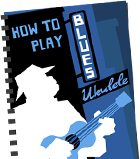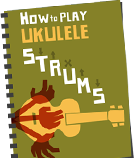A link section of the site is probably long overdue. I was working on the assumption that I could just mention interesting sites as they came along. But I’ve been convinced of the benefit of something more permanent where people can go to find out what’s worth reading on the web.
With that in mind I’ve set up a Ukulele Links section. You can add your own site to it on an ‘I link to you, you link to me’ basis (which does mean you can’t add MySpace/Facebook and the like with their ‘You do know you’re leaving MySpace/Facebook, right? If you do you’ll probably get robbed and punched,’ pages).
Which is another reason why I did it. People were demanding a link in my sidebar in exchange for a link from their site. And I don’t just give those away. I’m really choosy about those links and their only really for people who inspired me to start the site and help be right from the beginning. So that part of the site should keep those people happy too.
There’s also a facility on there to submit articles. So if you’ve got something pressing to say – a gig or uke review, some playing tips – feel free to submit it. If it’s good stuff, I’ll certainly be linking to it from the main blog. You can also include a link or two to wherever you like with your article without the need for a link back.
The part of the site is brand new and is based on software I’ve never used before. So there’s a good chance you’ll come across a bug. If you do, I’d appreciate it if you let me know (in the comments or by contacting me). You can also suggest any categories you think should be there.








